|
The Tyme books are a series of fairytale retellings for kids by Megan Morrison, set in a world co-created with her friend Ruth Virkus. I read all three books in one day; it was the first time in a while I’ve stayed up late reading in bed.
Grounded: The Adventures of Rapunzel is the first in the series and, naturally, a retelling of Rapunzel. The story takes the fairy tale as only a rough guideline; Rapunzel leaves her tower very early on, leading to a road trip with the male lead (Jack, of Beanstalk fame). Grounded makes a lot of storytelling choices that feel very familiar for Rapunzel retellings. I can draw lines to Disney’s Tangled (2010), Marissa Meyer’s Cress (2014), and Shannon Hale’s Rapunzel’s Revenge (2008)... especially Tangled. But it also feels fresh and new, from Morrison’s writing and from the rich and lively world Rapunzel’s exploring. Morrison’s Rapunzel starts out as bratty and spoiled, but even from the beginning she has a kind nature, and we get to watch her grow and mature. The book dives deep into her complicated relationship with the witch (the only mother she’s ever known). Rapunzel and Jack are the leads of the first book, and appear briefly in subsequent books. Disenchanted: The Trials of Cinderella is a very loose retelling, more in homages and references than in plot. The main plot is newly-rich student Ella’s fight for labor rights. Ella has a stepmother and stepsiblings, but they’re not evil; everyone means well, and both they and Ella have some growing and forgiving to do. The fairy godparents are a charitable organization who grant wishes, although they’ve lost their way over the years and Ella’s two godfathers are trying to get back to their original ideals. Glass slippers are the current fashion in the haute couture-obsessed kingdom. There’s a scene where fairy godparents fix up Ella’s gown and shoes so that she can look her best at a mandatory royal ball, and she makes an impression dancing with the prince before later leaving in a rush - but this is a fairly early segment setting us off on the grander plot. Ella's love interest Dash is a fun twist on the concept of Prince Charming; recently freed from a curse which forced him to be charming but insincere, he's a shy and reserved young man re-learning how to interact with people. In contrast to the subtle slow burn in Grounded, Dash and Ella fall fast and hard for each other, and marriage is even mentioned. I wasn’t a huge fan of this considering the age group. Where Grounded was more of a character piece and exploration of a troubled mother-daughter relationship, Disenchanted has a more wide-reaching political plot of Ella fighting against the kingdom’s corruption and the exploitation of the working class. The way everything comes together in the end is pretty fantastic. Transformed: The Perils of the Frog Prince might be my favorite of the trilogy. Remember how I mentioned plot threads and callbacks? In Grounded, Rapunzel gets a pet frog who clearly has something more going on. In Transformed, we learn that the frog is actually the missing Prince Syrah (mentioned in a throwaway line in Disenchanted). This book is a redemption arc. Syrah starts out as an arrogant, thoughtlessly cruel boy who makes a wish on the wrong wishing well and gets hit hard by karma. In a major difference from the fairy tale, frog-Syrah can’t talk, making his quest to break the curse infinitely more difficult. When a mysterious plague starts affecting people, Syrah realizes that as a tiny, overlooked frog, he might be in a unique position to investigate what’s really going on. After the first couple of books, I was expecting a romance; I was pleasantly surprised to realize that this is a very different narrative. Syrah does not get the girl, and a big part of his redemption arc is about accepting that, which I thought was a meaningful message and a good moral for young readers. And as part of that, the second half of the book becomes a buddy cop plot starring Syrah and his ex’s new boyfriend (the only person to figure out who he is and come up with a way to communicate). I loved this plot, and it’s where the story really took off. The complex themes and questions are sometimes more mature than I expected for a Middle Grade novel, and I think it’s suitable for all ages. Morrison builds an elaborate world that feels full of life and adventure (and sometimes a bit silly, like the characters in Disenchanted all having fashion-themed names). Each book is a standalone, but background events hint at more adventures elsewhere in the world and sometimes get unexpected callbacks in later books. There are tons of fairy tale references. Also, the color-themed kingdoms are all parallels to Andrew Lang’s Coloured Fairy Books series (“Cinderella” appeared in the Blue Fairy Book and Disenchanted takes place in the Blue Kingdom; “Rapunzel” was in the Red Fairy Book, and Grounded starts off in the Redlands. I love this so much!) Morrison said at one point on her blog that she planned six books. However, it looks like there hasn’t been any news since Transformed came out in 2019. I don’t know if we will ever see more of the series, which makes me sad. I would love to see Morrison’s take on Sleeping Beauty and find out where the magic acorn subplot was heading. But I'm very glad that at least these three volumes exist. If you’re looking for a fairytale retelling series with some shadow and seriousness to it alongside the quirky worldbuilding, and if you liked series like The Hero’s Guide to Saving Your Kingdom, Half Upon a Time, or (Fairly) True Tales, give these books a read. Also, while on the subject of Rapunzel, I've started a new page for variants of the Maiden in the Tower tale type. Check it out!
0 Comments
A few months ago I reviewed The Story of the Little Merman, a gender-swapped retelling of The Little Mermaid from 1909. I've come across a few modern parallels, but by far the best recent example is one from 2023: The Silent Prince, by C. J. Brightley. The delightfully cocky mer prince Kaerius falls for a human princess named Marin whom he saved from drowning, and seeks to become human so that he can officially meet and woo her. He quickly finds himself in the middle of a complicated political situation, all while learning to be a humbler person.
This is part of the Once Upon a Prince series, released by the indie publisher Spring Song Press, which is also run by Brightley. It includes twelve books, each by a different author, which retell popular fairy tales with a focus on the male leads and often a twist to the plot. The Silent Prince owes a fair amount to Disney. The "sea witch" role is filled by a giant kraken (although not as malevolent as Ursula) and Kaerius gives up his voice, not his tongue. However, there are also some elements from Andersen; Kaerius experiences pain from dancing in tight boots that he's not used to, and the story nods to the original story's themes of self-sacrifice. I've been on a kick of reading mermaid novels for quite a while now, and found true underwater settings fairly rare, probably because they're difficult to write well. It really requires a different mindset. It's easy for underwater worldbuilding to get cheesy with ocean puns, talking fish friends, and so on. But although the novel takes place 95% on land, Brightley's merfolk feel wild and alien in a way that I've rarely seen. This novel is at its best in the worldbuilding and the scenario of a merman adjusting to land. Plenty of mermaid stories feature the mermaid character being a fish out of water, but Brightley really sinks her teeth into it - for instance, we learn that licking someone's hand is a polite greeting among merfolk, while hugging is considered a show of great vulnerability because it exposes your throat. There's an element of realism in play, as seen by Kaerius experiencing numerous health concerns when he comes ashore after inhaling water. The way that Kaerius communicates is also refreshing. In a lot of retellings, the mermaid can't communicate with the prince at all. But Kaerius is used to sign language as part of normal merfolk life, so he just naturally signs to the humans he meets, and the princess and her guards gradually start to learn enough to understand him. There are a couple of letdowns. The ending felt rushed; after such an in-depth and colorful story, this was particularly disappointing. And although we spend a lot of time with Kaerius and his character development, we never really gain a deeper understanding of Princess Marin. Kaerius does realize that his initial impression of Marin was mere infatuation, and that he needs to actually get to know her as a person. This should be a good start! But then he gets to know her fairly easily, she turns out to be a kind and noble person, and... that's it. They have a sweet and straightforward romance. She's surprisingly chill about his strange habits and some reveals that should have been shocking; it feels like we never really get to see beyond the surface with her. We honestly get to see more of Kaerius's relationship with the human guard who hosts him. Overall, I'd class this as a solid retelling, fun and with a clean romance. It jumped right to the top of my list of favorites, and I'd suggest it to anyone who enjoys retellings and developed worldbuilding. I'm excited to say that Writing in Margins made it onto Feedspot's Top 45 Fairy Tale Blogs!
A while back, I discovered that an author named Ethel Reader had written a gender-swapped retelling of "The Little Mermaid" all the way back in 1909. Well, actually there are a lot of other elements mixed in. The story The novella begins by introducing the undersea kingdom of the Mer-People. In the kingdom is the Garden of the Red Flowers; a flower blooms and an ethereal, triumphant music plays whenever a Mer-Person gains a soul. The Little Merman, the main character, is drawn to the land from a young age. One day he meets a human Princess on the beach, and they quickly become friends. The Princess eventually explains that her kingdom is plagued by two dragons. She is an orphan, and the kingdom is ruled by her uncle, the Regent, until the day when a Prince will come to slay the dragons and marry her. The Little Merman wants increasingly to have legs and a soul like a human; there’s a sequence where he goes into town on crutches and ends up buying some soles (the shoe version). However, after some years, the Princess tries to take action about the dragons and protect her people. The Regent, who is actually a wicked and power-hungry magician, sends her away to school. The Little Merman asks her to marry him, but she explains that "I can't marry you without a soul, because I might lose mine" (p. 52). The Little Merman plays her a farewell song on the harp. The Little Merman talks to the Mer-Father, an old merman who explains that he once gained legs and went on land to marry a shepherdess whom he loved. However, when he made the mistake of revealing who he really was, the humans were terrified and drove him out. Unable to find a soul, he returned to the sea. The Mer-Father tells the Little Merman how to get to an underground cave, where he will meet a blacksmith who can give him legs. He gives him a coral token; as long as he keeps it with him, he can return to the sea and become a merman again. The Little Merman goes to the blacksmith, who happens to be a dwarf living under a mountain. He pays with gems from under the sea, and the blacksmith cuts off the Merman’s tail to replace it with human legs. The Little Merman wakes up on the beach, human and equipped with armor and weapons. The Mer-Father has also sent him a magical horse from the sea. He proceeds to the castle, where people assume he is one of the princes there to fight the dragon and compete for the Princess’s hand. The Princess, now eighteen years old, has just returned from college. The Princess doesn’t acknowledge the Little Merman—who is going by the name “the Sea-Prince”—and he’s afraid to identify himself after the Mer-Father’s story of being cast out. Every June 21st the Dragon of the Rocks appears and people try to appease it with offerings of treasure; every December 21st the same thing happens with the Dragon of the Lake. The princes go out to fight the Dragon of the Rocks, but it vanishes through a solid wall of the mountain; they all give up in disgust except for the Little Merman, who has been spending time with the Princess and now shares her righteous fury on her people’s behalf. With help from the dwarf blacksmith, he finds a way into the dragon's lair and slays it. The people adore him, while the resentful Regent spreads rumors against him, and the Little Merman is secretly disappointed that he hasn’t earned a soul. In December, the Little Merman goes out to fight the Dragon of the Lake. It drags him underwater, but he can still breathe underwater, and slays it too. The wedding is announced, but the Little Merman is conflicted; he still doesn’t have a soul, and if the Princess marries him, she will lose hers. He also fends off an assassination attempt from the Regent, but saves the Regent's life. The next morning, the Little Merman announces to the people that he is from the sea and has no soul. The Princess always knew it was him and loves him anyway, but everyone else rejects him and the Regent orders him thrown in prison. After a trial, he will be burned to death. The Princess gets the trial delayed and begins studying the royal library's law books. The Merman waits in jail, only to hear the Mer-People calling to him. They offer to break him out of jail with a tidal wave, but he refuses, worried about the humans. The Dwarf Blacksmith also offers him an escape, reminding him that he won’t get a soul either way; the Merman refuses again. Then the Little Merman's loyal human Squire visits. He has raised an army from the countryfolk, with the Sea-People and the Dwarfs also offering to fight. It may be bloody, but if they win, the Little Merman will have a chance to earn a soul. The Little Merman vehemently refuses; he will not kill his enemy, and he knows the kind of collateral damage that the Sea-People and the Dwarfs will bring to the kingdom. He gives the Squire his coral token, telling him to take it back to the Mer-Father; he is not returning to the sea. Alone in his cell, waiting for death, he hears the music that means a merperson has won a soul. The next day is the trial, where the Regent accuses the Little Merman of deception and treason. The Princess speaks up in his defense. The only issue is that the Little Merman doesn’t have a soul, so she reveals that she has found a record of a man from the Sea-People who came on land, was similarly accused of having no soul, and asked how he could get one. A local Wise Man told him that he would only win a soul when the Wise Man’s dry staff blossomed; at that moment, the staff put out flowers. The judge and lawyers decide to try this out, the Regent gleefully offers his staff, and the staff blossoms. The shocked Regent confesses all his crimes, including that he was the one who brought the dragons. The Little Merman intervenes to spare him from execution. The Little Merman and the Princess get married and rule the kingdom well, and there is a new red flower in the underwater garden. Background and Inspiration The Story of the Little Merman was initially released in 1907; it was a novella, with the same volume including an additional novella, The Story of the Queen of the Gnomes and the True Prince. Both were illustrated by Frank Cheyne Papé. The Story of the Little Merman was reprinted on its own in 1979. I have been unable to find much information about Ethel Reader, or any books by her other than this. In the dedication, she describes herself as the maiden aunt to a girl named Frances. The story itself has many literary allusions. It’s maybe twee at times but also had a lot of really funny lines. The overall mood made me think of George MacDonald’s writing. Some quotes that stuck with me:
First and most prominently, “The Story of the Little Merman” is an allusion to “The Little Mermaid.” Not only is the title similar, there is the description of the Garden of the Red Flowers, paralleling the Little Mermaid’s garden. There is also the overall plotline of the merman longing for both his human love and an immortal soul, going through a painful ordeal to become human, and winning a soul through self-sacrifice - with a final moral test where his loved ones beg him to save himself by sacrificing everything he's been fighting for. (One distinction: The Little Mermaid just gets the chance at an immortal soul, while the Little Merman actually gets his soul, along with a happily-ever-after with the Princess.) That's about where the similarities end. Reader’s book adds elements of dragon-slayer stories, and - most prominently - it plays on Matthew Arnold’s merman poems. “The Forsaken Merman” (1849) is one I recognized. Related to the Danish ballad of Agnete and the Merman, it tells of a merman who has taken a human wife and has children with her. The human woman hears the church bells and wishes to go back to land for Easter Mass: “I lose my poor soul, Merman! here with thee.” Once there, she never returns, leaving her husband and children forlorn. “The Neckan” (1853/1869) was new to me. This poem also deals with a human/sea-creature romance and the question of souls and religion. The Neckan takes a human wife, but she weeps that she does not have a Christian husband. So he goes on land, but when he introduces himself, humans fear and revile him. This is directly based on a Danish folktale, collected in Benjamin Thorpe's Northern Mythology: A priest riding one evening over a bridge, heard the most delightful tones of a stringed instrument, and, on looking round, saw a young man, naked to the waist, sitting on the surface of the water, with a red cap and yellow locks… He saw that it was the Neck, and in his zeal addressed him thus : “Why dost thou so joyously strike thy harp ? Sooner shall this dried cane that I hold in my hand grow green and flower, than thou shalt obtain salvation.” Thereupon the unhappy musician cast down his harp, and sat bitterly weeping on the water. The priest then turned his horse, and con tinued his course. But lo ! before he had ridden far, he observed that green shoots and leaves, mingled with most beautiful flowers, had sprung from his old staff. This seemed to him a sign from heaven… He therefore hastened back to the mournful Neck, showed him the green, flowery staff, and said : " Behold ! now my old staff is grown green and flowery like a young branch in a rose garden ; so likewise may hope bloom in the hearts of all created beings ; for their Redeemer liveth ! " Comforted by these words, the Neck again took his harp, the joyous tones of which resounded along the shore the whole livelong night (1851, p. 80) Arnold edited his poem after its first publication. In his first version, the priest rejects the Neckan and that’s it. In his second version, Arnold reintroduces the theme of the miraculous flowering staff. However, instead of being overjoyed like the Neck in the folktale, Arnold's Neckan continues to weep at the cruelty of human souls. The flowering staff is an old and widespread trope; it appears in the biblical story of Aaron, in a legend about St. Joseph, and most similarly in the medieval legend of Tannhauser, where a knight asks a priest if his soul can still be saved after he dallied in an underground fairy realm. While The Story of the Little Merman is clearly influenced by Andersen’s “The Little Mermaid,” it is equally or more inspired by “The Neckan,” even directly quoting it in one scene. I have never been a fan of the motif that merfolk don’t have souls, but it was an accepted idea in medieval legend. I recently read Poul Anderson’s The Merman’s Children, inspired by the story of Agnete and the Merman and thus distantly related to The Story of the Little Merman. In Anderson’s book, receiving souls is a Borg-like assimilation that costs the merfolk their old identities and memories. It’s a bitter take on the conflict between Christianity and paganism. Reader has a much more positive view on merfolk gaining souls. The merfolk are beautiful, but they just kind of exist, doing no harm and no good. They and other supernatural beings are part of nature. The Little Merman comes truly alive through his time on land, learning passion and emotions, and how to care about people other than himself. He learns how to feel anger and hatred, but these can be positive, the story explains—anger on behalf of vulnerable people, hatred of evil and greed. I like how the story raises the question of how the Merman actually acquired his soul. Did he earn a soul in the moment that he selflessly faced death and sent away his last chance of escape, or was his soul developing all along from the moment when he first saw land? The story hints pretty strongly that it’s the second one. I also really like the play on the Little Mermaid's final choice in Andersen's original. Here, this scene is greatly extended and really delves into the alternatives, raising different possibilities - might the Little Merman return to his old existence, or might he take a moral step back but then continue with his quest for a soul afterwards? He's not willing to do either. Whereas the Little Mermaid has to decide whether to harm her beloved who has hurt her deeply, the Little Merman is urged to kill a mortal enemy who has tried to murder him multiple times. He rejects this partly out of a sense of honor - he has killed dragons but he will not sink to the Regent's level by murdering a human - and partly because he foresees the bloodshed that this kind of war would bring to the whole kingdom. (In the illustrations, the Little Merman wears a crown - possibly of kelp - that looks a little like a crown of thorns.) It's also interesting to contrast the romance with that in The Little Mermaid. Here, the Merman and the Princess are childhood friends. They reconnect as young adults and their relationship deepens. The Merman is inspired by the Princess’s fierce love for her people. He does not have the Little Mermaid’s quest of marrying in order to get a soul; instead he is trying to get a soul so that he can marry the Princess. It’s his concern for her well-being that causes him to reveal his identity and give the chance for her to back out of their mandated engagement, even though it nearly costs him his life. The Little Merman has some fun fish-out-of-water moments and reads as a very peaceful, innocent character. There is a touch of realism in the fact that he gets beat up pretty badly in both dragon-battles and needs a lot of time to recover on both occasions. Meanwhile, the Princess is brave, loyal, and intelligent. She may not ride out to fight the dragons herself, but she’s the one who saves the Merman in the end, using her political savvy and education to delay his trial and build a legal defense. This book is chock-full of folkloric and literary references, and I think I might even prefer its take on souls to that of The Little Mermaid. Bibliography
This review contains spoilers - marked towards the end.
I recently reviewed Thornhedge by T. Kingfisher, which combined the Sleeping Beauty story with legends of changelings. Not long after reading that one, I picked up a very different changeling tale in Unseelie by Ivelisse Housman (2023). The story picks up with Iselia ("Seelie"), a changeling adopted by humans and raised as sisters with her human counterpart Isolde. The two girls live on the road, working as pickpockets after a disaster with Seelie's uncontrollable magic forced them to flee their home. (Where Kingfisher's Toadling is an adult caretaker to her changeling counterpart thanks to time shenanigans, Seelie and Isolde are equals, twins. Their relationship is loving but tumultuous.) Then they stumble upon another two thieves mid-heist, and Seelie winds up with a curse imprinted on her skin, taking the form of a magical compass pointing the way to a long-lost treasure. The groups reluctantly team up to find the treasure, even as Seelie realizes that she'll have to face her dreaded magic and learn to control it. This is Housman's debut novel and it's a decent read, although it feels a little clumsy or muddy at times. The romance takes a while to get going but eventually won me over, and I kind of liked that approach. It is the first in a duology, and ends in an unresolved cliffhanger. However, I was very intrigued by Housman's take on changelings. Housman's novel is woven from two modern ideas surrounding changelings: a recently-created short story that has arguably achieved folktale status, and the theory that changelings were inspired by children with autism. Housman, who is autistic, wrote Seelie inspired by her own experience: "I think a lot of autistic people grow up feeling like we’re from another world, and the idea of putting a positive spin on that feeling within a magical world like the ones I grew up reading was irresistible" (Kirichanskaya, 2023). The changeling as twin is a growing trope, which has done a lot of its growing within Internet culture. (The name 'changeling' can apply to either a stolen human child or its fairy replacement, but in this post I will mainly use it to refer to the fae child.) Thornhedge feels more indicative of the older changeling tales, where faeries are dangerous and changelings are monsters; the story is told from the perspective of the stolen human child. In folktales, changelings might look like babies or disabled children, but many weren't babies at all. They could be pieces of wood, or adult fairies. The reveal of the changeling's true nature often emphasizes its extreme old age. In one Cornish tale, a changeling named Tredrill posing as an infant turns out to have a wife and children of his own (Bottrell, Traditions and Hearthside Stories, pp. 201-202). In a parallel story from Iceland, a changeling in the shape of a four-year-old boy is startled into admitting that he's really a bearded old man and "the father of eighteen elves." In one Danish folktale, "How to Distinguish a Changeling," a father wakes up just in time to stop a changeling swap, but finds himself holding two babies with no way to tell which is his. The family ends up putting the babies through an extremely dangerous test by exposing them to a wild stallion, causing the fairy parent to take back her child (Thorpe, Northern Mythology, vol ii, pp. 175-176). However, moving into the 20th century, more authors started to write stories that treated changelings as children rather than monsters. The first instance I can find of a story where a human family decided to raise both their own child and the changeling is the short original fairy tale "The fishwife and the changeling" by Winifred Finlay (Folk Tales from Moor and Mountain, 1969). Here, the fishwife makes a bargain with the faerie mother—give back her child, and she'll willingly care for and nurse the faerie baby, no trickery needed. The faerie child grows up to consider the humans his true family. Other sympathetic portrayals of changelings became popular. The Moorchild by Eloise Jarvis McGraw (1996) was an influential children's book told from the perspective of a changeling who grows up feeling like an outsider. Holly Black's Tithe (2002) has a teenaged girl discover that she is a changeling. Later in the series, she rescues her human counterpart (still a young child thanks to her time in fairyland), taking the roles of older and younger sisters. In Delia Sherman's Changeling (2006), the human child raised in a fairy realm must work together with her changeling counterpart who's more accustomed to mundane human life, with both returning to their adopted homes at the end. In An Artificial Night by Seanan McGuire (2010), the main character accepts her changeling double as her sister (although the swap takes place when the characters are adults). But the idea of the changeling and human child raised together as twins feels more specific. After Finlay's story, the next "adopted changeling twin" story that I know of appears in The Darkest Part of the Forest (2015) by Holly Black (again). In a key part of the backstory, a woman turns the faeries' games back on them. She burns the faerie baby with a poker to summon the faeries to return her son. However, then she announces with righteous fury that she will also keep the faerie baby: “You can’t have him,” said Carter’s mother, passing her own baby to her sister and picking up iron filings and red berries and salt, protection against the faerie woman’s magic. “If you were willing to trade him away, even for an hour, then you don’t deserve him. I’ll keep them both to raise as my own..." Not long afterwards and along the same lines - but with different logic behind it - in March 2017, the Tumblr blog magic-and-moonlit-wings posted a very short story titled "Rescue and Adoption," published on Tumblr (March 2017). The story starts in medias res inside a fairy mound. The fairies present a woman with two perfectly identical babies and give her a choice. One is her own, and the other is the changeling she's been raising. She startles them with her declaration that both are her children, one biological and one adopted, and returns home with both babies. The premise is reminiscent of the Danish folktale, with a family left trying to identify their true child after fairy trickery, but the message is diametrically opposed. The woman rejects the fairies' game and lovingly accepts both children. "Rescue and Adoption" went somewhat viral. Many people wrote their own spins with the original author's blessing. An abbreviated version was posted as a writing prompt on Reddit (March 2022) and on Tumblr (April 2022), leading to even more reimaginings. (Here is one example, an untitled story by Tumblr user Dycefic, which begins with a childless woman being told to plant a pear tree in a manner reminiscent of "Thumbelina" or "Tatterhood".) The number of retellings and adaptations make this a modern folktale in its own right. There is an echo of the same sentiment in the middle-grade book Changeling by William Ritter (2019). Here, as in the Danish folktale, a parent interrupts the changeling switch just in time, but is left with two babies and no way to tell which is which. However, although other people in the village are fearful of the changeling and suggest dangerous tests, she decides to care for both as her own. But Housman's book is even more directly inspired by the "Rescue and Adoption" tale. As previously mentioned, it is also built on the theory that changeling tales were inspired by children with autism, which was circulating on Tumblr around the same time. See, for instance, this group discussion circa 2016. The short story "here's a story about changelings" (posted August 2019) is a realistic tale about autistic children growing up in a world where the only name for them is "changelings." Out of works already mentioned here, Delia Sherman's Changeling and dycefic's take on the "Rescue and Adoption" prompt both nod to this theory by featuring changeling children with autistic traits. There may be some truth to the autism theory, and there are some compelling parallels. In traditional stories, the changeling is detected when a healthy, beautiful baby undergoes an apparent change in personality and a regression in hitting typical milestones - similar to some autism diagnoses. But I would argue that the legend came from a mix of many different factors: disabilities, failure to thrive, postpartum depression, and/or chronic illness. See the tragic case of Bridget Cleary: when she fell ill in 1895, her husband murdered her, claiming that he was trying to retrieve his real wife. In 1643, a folk healer and accused witch named Margaret Dickson was unable to heal a sickly child. She then told the mother to throw it onto the fire because "the bairne was not hirs." The mother opted not to take Dickson's advice, and the child apparently recovered (Scottish Fairy Belief: A History, pg. 97). Martin Luther encountered a disabled child that he believed was a changeling and child of the devil. As far as I'm concerned, the changeling myth is the darkest fairy tale, because at least some people believed in it and acted on it. In some cases, it may have been a cautionary tale warning people not to leave children unattended. But in others, it was an excuse for societally-sanctioned neglect and murder. (Major spoilers from this point on) So far, Unseelie falls in line with many other takes on the "Rescue and Adoption" tale. However, a deft twist towards the end casts the whole story—and modern changeling tropes in general—in a different light. The mother in Unseelie is absent, but the story of her long-ago rescue of her children underlies the entire plot. Much like the mother in Kingfisher's Thornhedge, she is courageous and determined and loving—but maybe that's not enough. Housman stated in an interview, "I approached this story with the intention to take the changeling myth, turn it upside down, and reclaim it—all through the lens of a fantasy world... All that to say, changelings in this world are autistic people, and vice versa" (Creadan, 2023). Towards the end of Unseelie, it is revealed that Seelie was the original human child, and her neurotypical sister Isolde was the duplicate created by the fairies. (Housman also includes the more modern idea that the changeling swap can leave the mortal child with magical abilities of their own.) Seelie's mother assumed that she was a changeling, and thus went to the fairies and demanded her "original" daughter back. The malicious fairies were happy to play along, producing Isolde. Seelie's mother still behaved admirably by accepting both children and thwarting the fairies' cruel game, but is it enough to make up for her inherent rejection of a daughter who didn't match her expectations? We'll see where the second book in the duology takes things. Housman's followup, Unending, is expected to be published in 2025. Bibliography
(This review contains spoilers.)
A retelling of Sleeping Beauty. Toadling, a changeling child raised by water monsters known as greenteeth, has grown into a strange-looking being with a propensity for turning into a toad. She is sent back to the human realm to a small kingdom, to attend the baby princess's christening and bestow a blessing on her. Two hundred years later, Toadling guards what's left of the castle inside a protective hedge of thorns, containing the threat within, until one day a kindhearted knight rides up, searching for the legendary sleeping princess. This was a short read - I finished it in an hour. I enjoyed it a lot (I've enjoyed all of T. Kingfisher's books that I've read). It's nice to read books about unabashedly good and kind heroes. Toadling's relationship with Halim is very sweet. There are also lots of references to fairy lore. (My favorite section was a brief exploration of the idea that fairies steal milk from cows.) The main idea of the novel is the changeling myth. Toadling is actually the true child of the king and queen, having grown up in the fairy realm where time doesn't match up with ours. And the princess, Fayette, is her fae counterpart—a juvenile version of the cruel, heartless fairies who will vaporize humans without a second thought. The older Fayette gets, the more dangerous she becomes. The most heartbreaking part is the character of the queen, who loves her daughter fiercely and does her best to protect Fayette while also coming to realize that Fayette is a monster who must be stopped. She never suspects her real relationship to Toadling, who never breathes a word. There is no grand resolution for her character. It's pretty bleak. In the afterword, Kingfisher explains that she had the idea while working on Harriet the Invincible, also a fractured fairy tale retelling of Sleeping Beauty (in which the princess is an indomitable hamster, cursed to prick her finger on a hamster wheel on her twelfth birthday, who fights back against the curse and visits some other fairy tales). If you're looking for a short and sweet retelling of Sleeping Beauty, definitely give this one a read. Emily Wilde's Encyclopaedia of Faeries, by Heather Fawcett, is a recently published fantasy romance which plays with many fairy and folktale tropes. The main character is a socially awkward Cambridge professor and "dryadologist" - in this world, faeries are real and well-known, with a thriving field of study surrounding them. Written in diary format, it follows Emily's field research in the remote northern village of Hrafnsvik, where she intends to make her name with an groundbreaking study of some little-known fairy folk. Things soon get complicated as she deals with dangerous fae curses, the local humans, and a handsome academic rival.
The book gets off to a slow start, but once it got going, I enjoyed it a lot. The interplay between Emily and Bambleby is hilarious and eventually turns into a compelling romance. I loved how authentic the rich, dark “fairy tale” mood felt. While original with its own interpretations of folklore creatures, the story feels based in a well-rounded understanding of folklore. For instance, Fawcett infuses a changeling story with more plot significance, elaborating on why the faerie child was left. Emily Wilde's world isn't just a mix of mythical creatures running around, but an element of fairy tale. There are familiar themes and motifs, and this is something acknowledged in the story; Emily holds an unorthodox belief that faeries and the events around them follow the rules and logic of stories in a way that’s alien to humans. There’s also a sense of fairies being inherently local to specific countries and climates. This folkloresque tone is one that I don't always find in modern fantasy; Holly Black's fairy books tend to capture it well. I was amused by the book's scholars and researchers of Faerie, with Emily’s frequent footnotes giving hints into their academic papers, conferences, and drama. In this world, fairies are all real, so there is a whole branch of science blending naturalists with folklorists. I was reminded strongly of rivalries and controversial theories in the real-world folklore field. The dashing, flamboyant Wendell Bambleby has gotten into trouble for falsifying data in his studies - something not too far off from reality in some cases. One thing that stands out to me is how the characters classify creatures under specific names, such as “brownie” for helpful house spirits and “kelpie” for water horses. This is a real approach among folklorists and it has flaws, since these words are rooted in specific traditions and were never meant to be used as generic labels. This is not a big deal in fiction and I’ve used words in this way myself, but it bears mentioning. If you liked Holly Black's Folk of the Air and Spiderwick Chronicles series, or Naomi Novik's Spinning Silver, then this is one to check out. Over the past year or so, I’ve been on the hunt for mermaid fiction. I’ve been through a lot of lists, and here's my own list of some favorites so far. There are many, many, MANY books on mermaids out there. The books here are ones that particularly stood out as both enjoyable and memorable for me this year. Brine and Bone by Kate Stradling (2018): a retelling of The Little Mermaid. Stradling does something I've seen in a few other places by telling the story from the perspective of the other maiden - the human girl who steals the prince's heart. In this version, Magdalena is the prince's childhood friend and the girl he always really loved. What this book does a little differently is that it treats mermaids as fae. This connection often gets lost in modern fiction, but old stories of mermaids and fairies really do overlap a lot. The "little mermaid" is eerie and alien, and the human characters are rightfully fearful of her. But Magdalena surprisingly finds some common ground with the mermaid. My only complaint is that it's pretty short and and I would have liked to see it go even more in depth. Mermaid’s Song by Alida van Gores (1989): In an underwater society torn between two races, the mogs and the oppressed merra, a merra-maid named Elan learns to use her magic and competes for the coveted post of guardian to the Sea-Dragons. The competition will decide the fate of the entire ocean. If you want to read an adult fantasy with a committed treatment of an underwater mermaid world, this is for you. Magic is kept fairly low-key, so the oceanic society feels refreshingly practical, with little details reinforcing that this is not our world - for instance, nobody sleeps in beds, and instead they essentially tie themselves to things. The entire story takes place underwater, which is surprisingly rare for a mermaid book! That said, there were a few uncomfortable themes that kept me from completely enjoying it. For instance, rather than the characters fighting for true equality, the merra are the rightful ruling class and the mogs need to get back to being subservient laborers. All the Murmuring Bones by A. G. Slatter (2021): Mirin O’Malley is one of the last descendants of a formerly prosperous family, whose wealth came from regular human sacrifices to the merfolk. When Mirin’s grandmother plots to marry her off to her creepy cousin and start up the sacrifices again, she runs away to search for her missing parents. Mermaids, rusalki, selkies and other mythical water creatures are more of a backdrop here, ominous figures who haunt Mirin. However, the main plot is interspersed with short, folktale-esque stories that I really enjoyed. I also liked the themes of healing and making amends, and was thoroughly rooting for Mirin by the end. Into the Drowning Deep by Mira Grant (2017): A marine research ship heads out into the ocean to investigate a mysterious disaster and prove whether or not it was caused by mermaids, as rumor has claimed. Turns out the mermaids are all too real - and the research expedition is about to turn into a bloodbath. Despite an underwhelming ending, this B-movie horror in book form is compulsively readable. I just really loved the plot of scientists discovering mermaids. Grant’s faux-scientific patter about mermaids with mimicking abilities and bioluminescent tentacle-hair feels believable, at least to me as someone who knows nothing about marine biology. If that sounds like something you'd enjoy, then this and its prequel, Rolling in the Deep, are both worth a read. The Moon and the Sun by Vonda McIntyre (1997): A dark, dense, intricate historical fantasy where a captured mermaid is brought to the court of the Sun King, Louis XIV. (The mermaids or sea people here have two leg-like tails.) Naive young noblewoman Marie-Josephe learns to understand the "sea monster's" musical speech, sparking an ethical dilemma and a mission to free the imprisoned sea woman. The novel is very much about personhood, touching on misogyny, slavery and treatment of people with disabilities, extending through the image of the sea woman whom authorities are ready to discount as a mindless animal that can be killed and eaten. There’s some good “mermaid” worldbuilding sprinkled in, too; the novel is an expansion of McIntyre's short story, “The Natural History and Extinction of the People of the Sea.” It can be hard to follow at times; there's a huge cast and everyone in the French court has multiple names and titles. (This book got an absolute travesty of a film adaptation, and I’m still mad about it. JUSTICE FOR COUNT LUCIEN!) Emerge by Tobie Easton (2016): Another Little Mermaid retelling - sort of. In this universe, unbeknownst to humans, The Little Mermaid was based on a true story and the heroine’s actions left the undersea world of merfolk in turmoil. In modern times, a mermaid named Lia Nautilus lives in disguise as a human, shielded from the war going on in the deep. When she learns that her human crush is in danger, she turns to forbidden siren magic to save him. This cheesy, fluffy teen romance, the first of a series, was a surprise favorite for me. I was initially put off by the cartoony worldbuilding and puns (in one early eyerolly moment, a hot guy is called a “total foxfish”). But Easton commits to it and clearly put a lot of thought into a world with shapeshifting mermaids, underwater architecture, and magic. Lia’s plight is compelling, and I found myself enjoying the trilogy even more as it went on. A Comb of Wishes by Lisa Stringfellow (2022): Kela, a young girl grieving her mother’s death, finds a mermaid’s comb. The mermaid offers her a wish in exchange for its return, and there’s only one real option for Kela: for her mother to be alive again. But there’s a steep price for wishes, and when the comb is stolen before Kela can return it, things quickly start to go wrong. This middle-grade novel was a joy to read. Stringfellow blends the Caribbean setting with touches of mermaid stories from around the world (from "The Little Mermaid" to "The Old Man of Cury" and "The Soul Cages"). Mermaids are more of a mystical force here than in most of the other books on this list, but this book is firing on all cylinders with lyrical writing and a compelling, emotional plot. Some of these books I honestly didn't expect to like so much - I originally ignored Emerge because of the punniness, A Comb of Wishes because it was a kids' book, All the Murmuring Bones because it sounded like the mermaids were barely in it. It was exciting to be able to add them to the list. Looking at this list, I realize that most of them are set primarily on land or have human main characters; this is a common theme. Writing an underwater setting can be a challenge because it rules out so much of society and technology that we take for granted.
I'll continue to read mermaid books as I find them - because I like mermaids, but it's also fun to observe the popular image of these beings from folk and fairy tales. The Little Mermaid is a very popular subject for retellings. If you have a favorite mermaid book, drop it in the comments! I recently read Liesl Shurtliff’s series of fairytale retellings for children. The books retell, in order, Rumpelstiltskin (Rump), Jack and the Beanstalk (Jack), Red Riding Hood (Red), and Snow White (Grump). However, they bring in elements of multiple other fairytales. So for instance, Red Riding Hood’s grandmother is Rose Red from the less-retold tale of “Snow White and Rose Red.” All four books take place in the same fantasy world, with interconnected characters.
My personal favorites were Red – particularly the friendship between Red and Goldilocks - and Grump, with its worldbuilding of a dwarf society. Another interesting element was how we see the point of view swap of Rumpelstiltskin – first in Rump from the title character in Rump, then in Jack from the queen who bargained with him, who is rather foolish but also manages to be sympathetic. I was also delighted by just how many stories Shurtliff combined to create Jack, and how creatively and seamlessly it came together. It borrows from “Tom Thumb” and “Thumbelina,” and maybe I'm reading into it but I even recognized a touch of “Thumbling the Giant” with the Tom Thumb character being kidnapped by a giant. Shurtliff is great at setting up endearing characters and readable stories. I felt the character of Jack was hardest to get invested in. Shurtliff was clearly going for a depiction of a troublesome young boy, but he was a little too obnoxious and dumb for me to really enjoy his point of view. Also, this is more personal, but one of my pet peeves is when fairytale retellings focus on the Disney renditions. Grump has several nods to Disney's 1937 animated film – most notably including Grumpy the dwarf. However, Shurtliff shows off plenty of knowledge of the original tales, such as the apple being half red and half white as in the Grimm story. And I liked the story enough to forgive the Disney references. Overall, these books are simple, quick reads that I found to be enjoyable and creative adaptations. A great series for middle-grade readers. Ever heard of the theory that Shakespeare was a hoax? The idea is that William Shakespeare of Stratford - the man the plays were originally attributed to - didn't actually write them. In a twisting and secretive conspiracy, the books were actually penned by Francis Bacon. Or Edward de Vere, Earl of Oxford. Or Christopher Marlowe. Or one of a whole slew of other people (including possibly Queen Elizabeth herself). Contested Will: Who Wrote Shakespeare?, by James Shapiro, is a book concerned not just with the truth behind the matter, but with with why the conspiracy theories began and why they’ve gone almost mainstream.
The book begins by examining how Shakespeare's image developed over the centuries after his death. First he became a revered, even deified figure, built up into a perfect literary genius. But when researchers finally dug up the first long-desired scraps of information on his personal life, the real Shakespeare was disappointingly mundane. The legal and monetary records that survived made him look like a moneygrubbing Shylock type. This Shakespeare did not fit the mold that had been constructed for him. Eventually, people began to suggest that Shakespeare was a hoax. The real author (and there would be many suggestions for the real author) was someone erudite, learned, well-traveled, and high-born (because, of course, some middle-class businessman wouldn’t have the noble breeding necessary to produce such works of pure artistry). Shapiro focuses on the two most popular candidates, Francis Bacon and Edward de Vere. Over the course of the book, he goes into the motives of the theorists and their followers (including such figures as Mark Twain, Helen Keller and Sigmund Freud). For instance, the writer who popularized Edward de Vere as a potential Real Shakespeare, believed that democracy should be demolished in favor of monarchy. The last section of the book deals with what we do know about William Shakespeare of Stratford. There is surviving contemporary evidence that has surfaced over the centuries. Details lend interesting context to how Shakespeare worked. Those supposedly penny-penching business records may actually have been his wife, since as a married woman her business would all be under her husband's name. Shakespeare wrote many parts for specific actors. And during a late part of his career, he was frequently cowriting with other playwrights. This was particularly fascinating for me because Shakespeare left such an enduring influence in how British fairies evolved in the popular imagination – Oberon, Titania, Puck, and Mab are all here to stay, but we are still guessing at some of the particulars of where he got names (Mab, for instance). Shapiro's writing is accessible and engaging, and paints a vivid picture of Shakespeare and the fans and critics who followed. Steel Drivin' Man: John Henry - The Untold Story of an American Legend, by Scott Reynolds Nelson, recounts an effort to research the story behind the traditional song.
I came across this when I found the children's edition, Ain't Nothing But a Man: My Quest to Find the Real John Henry, at my library. It was told in an immediate first-person narrative, and I found it a great work for younger readers. It teaches kids how to do historical research and investigate folklore. After looking through it, I knew I had to read the full edition. I thoroughly enjoyed both versions, although I leaned more towards the one for adult readers, which was longer and more in-depth. It's filled with resources, looks at different versions of the John Henry song and its evolution, and visits to the area where the song would have originated. Nelson ultimately comes up with a theory for the origin of the song, and a candidate for a historical John Henry. Not everyone will agree with the theory, but I found Nelson's process fascinating and the theory fairly convincing. More than anything, the moment where the pieces fall into place is fantastic. A lot of effort went into this book and it shows. I recommend both versions to anyone interested in researching folklore. |
About
Researching folktales and fairies, with a focus on common tale types. Archives
July 2024
Categories
All
|
Writing in Margins




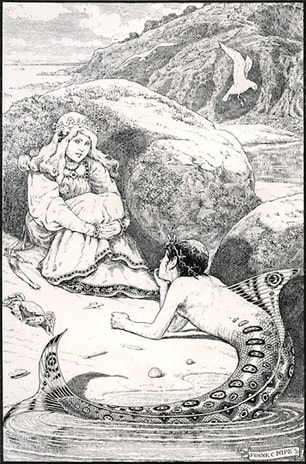
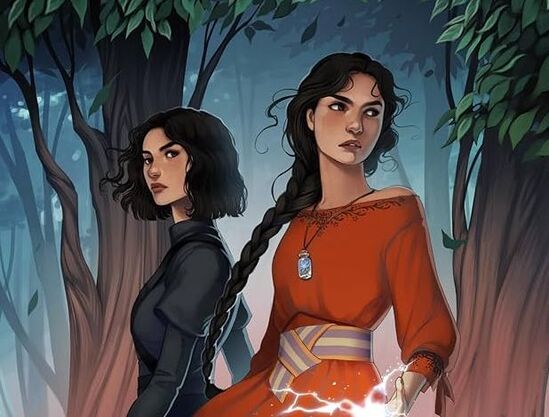
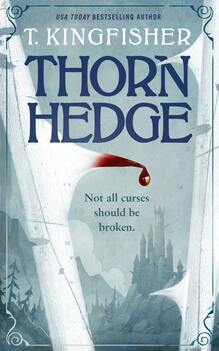
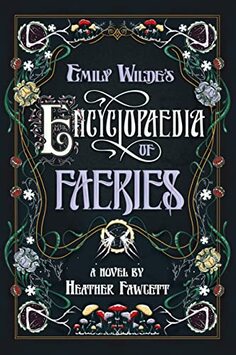
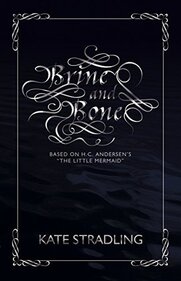
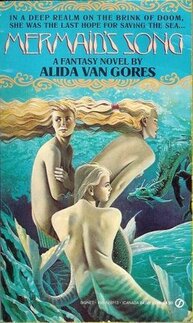
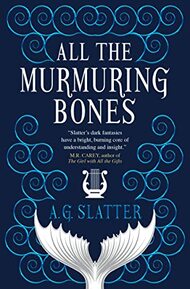
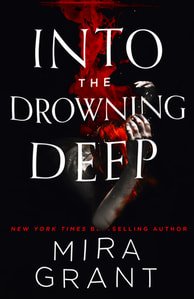
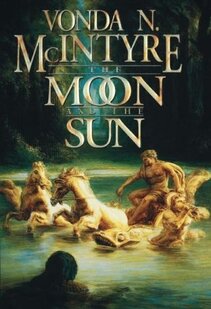

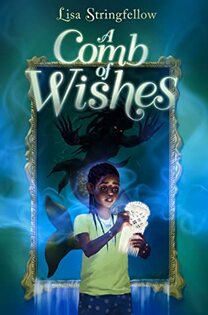
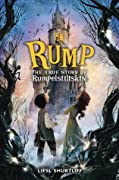
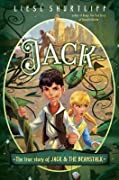
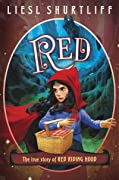
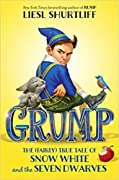
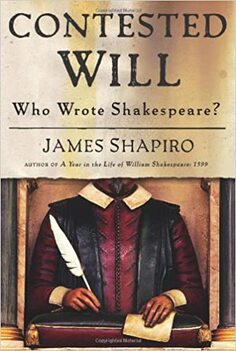

 RSS Feed
RSS Feed
